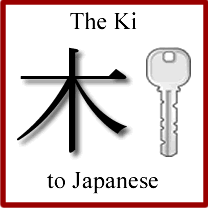by Eric Ysasi

In the beginning, there were many of us in the classroom. We hailed from all parts of the world, had ancestors who came from distant lands seeking opportunity, and united for the common purpose of overcoming one of the greatest walls of communication in the modern world – language.
It was not just any language, however. Often cited as one of the most laborious languages to learn for native speakers of English, Japanese is a language that systematically rejects even its most ambitious learners. Language experts criticize the complex writing system that takes even native Japanese students their entire primary school careers to master, and writing and reading are indeed formidable opponents to overthrow. The most profound hardship of Japanese, however, is its incredible distance from the English language.
The differences cannot be ignored, even on the outset of the Japanese language learning journey. Many of them are obvious; the pictographic writing system, the simple pronunciation, the lack of consonant and vowel distinction due to the syllabic nature of the language (phonemes generally follow a pattern of consonant vowel combinations like "ka" or "go", but are considered a single sound), and the flow of conversation are all inherently unique and decidedly far removed from English. In fact, most Japanese language learners who tout their second language as the most difficult to learn will tell skeptics that these are the reasons why Japanese is such an astounding challenge.
Of course, it cannot be and is not so simple. The word for “tree”, Japanese “ki”, is one of the first words a learner studies, and rightly so. After mastering the basics of Japanese, a point at which most learners will yield and are content with dazzling their friends with simple sentence constructions, the language begins to grow and branch from a promising and healthy sapling into a beastly, hulking learning tree that reaches so far up that even advanced learners can scarcely see the top.
The words, the grammar, the constructions, the mood, aspect, time, intonation, figurative language, creativity, and wordplay – the features of language that make it so great – are the reasons that Japanese is truly such a marvelous climb. Even everyday constructions like the English “have to” or “must” require a bit of magic. Japanese must say something in the vein of “If I don’t (do it), then it will not be” to express a required action, and in this way create a language environment in which native speakers of English must completely rearrange their way of thinking.
Japanese language learners are required to consider heavily every use of every word, as an English “equivalent” is, more often than not, awkward or cannot be understood at all. A very simple and classic example is the case of soup. In Japan, one cannot eat soup, even if there are solid foods in the broth. One must drink it to consume it. Also, if a Japanese person wants to find his or her friend, he or she has to go “search” for that friend, because to “find” that friend means to have already located him or her and be in his or her presence.
It is understanding these subtleties that creates the impressively large divide between those who learn and those who tried to learn Japanese. That incredibly large class of language learners in which I started dwindled in just 2 years to a class one quarter of its original size. After the classes ended, only a handful of us continued to pursue Japanese, and only a couple of us will reach near-native status. Nearly 5 years deep already, I plan to be one of them, but honestly, I still can’t see the top of that tree.
I am Eric Ysasi, currently a JET Program participant working as an Assistant Language Teacher in Kikonai, Japan. Originally from Corpus Christi, TX, I joined the Air Force to learn Visual Information Production and Documentation, then attended university with the help of the GI Bill for English and Japanese language. I’ve worked as a writing tutor, translator, and educator for the past 5 years, and would like to pursue writing and translation full-time.
If you have any comments or questions, you can contact Eric at: ysasi.eric@gmail.com
Writing systems | Language and languages | Language learning | Pronunciation | Learning vocabulary | Language acquisition | Motivation and reasons to learn languages | Arabic | Basque | Celtic languages | Chinese | English | Esperanto | French | German | Greek | Hebrew | Indonesian | Italian | Japanese | Korean | Latin | Portuguese | Russian | Sign Languages | Spanish | Swedish | Other languages | Minority and endangered languages | Constructed languages (conlangs) | Reviews of language courses and books | Language learning apps | Teaching languages | Languages and careers | Being and becoming bilingual | Language and culture | Language development and disorders | Translation and interpreting | Multilingual websites, databases and coding | History | Travel | Food | Other topics | Spoof articles | How to submit an article
[top]
You can support this site by Buying Me A Coffee, and if you like what you see on this page, you can use the buttons below to share it with people you know.

If you like this site and find it useful, you can support it by making a donation via PayPal or Patreon, or by contributing in other ways. Omniglot is how I make my living.
Note: all links on this site to Amazon.com, Amazon.co.uk
and Amazon.fr
are affiliate links. This means I earn a commission if you click on any of them and buy something. So by clicking on these links you can help to support this site.
[top]